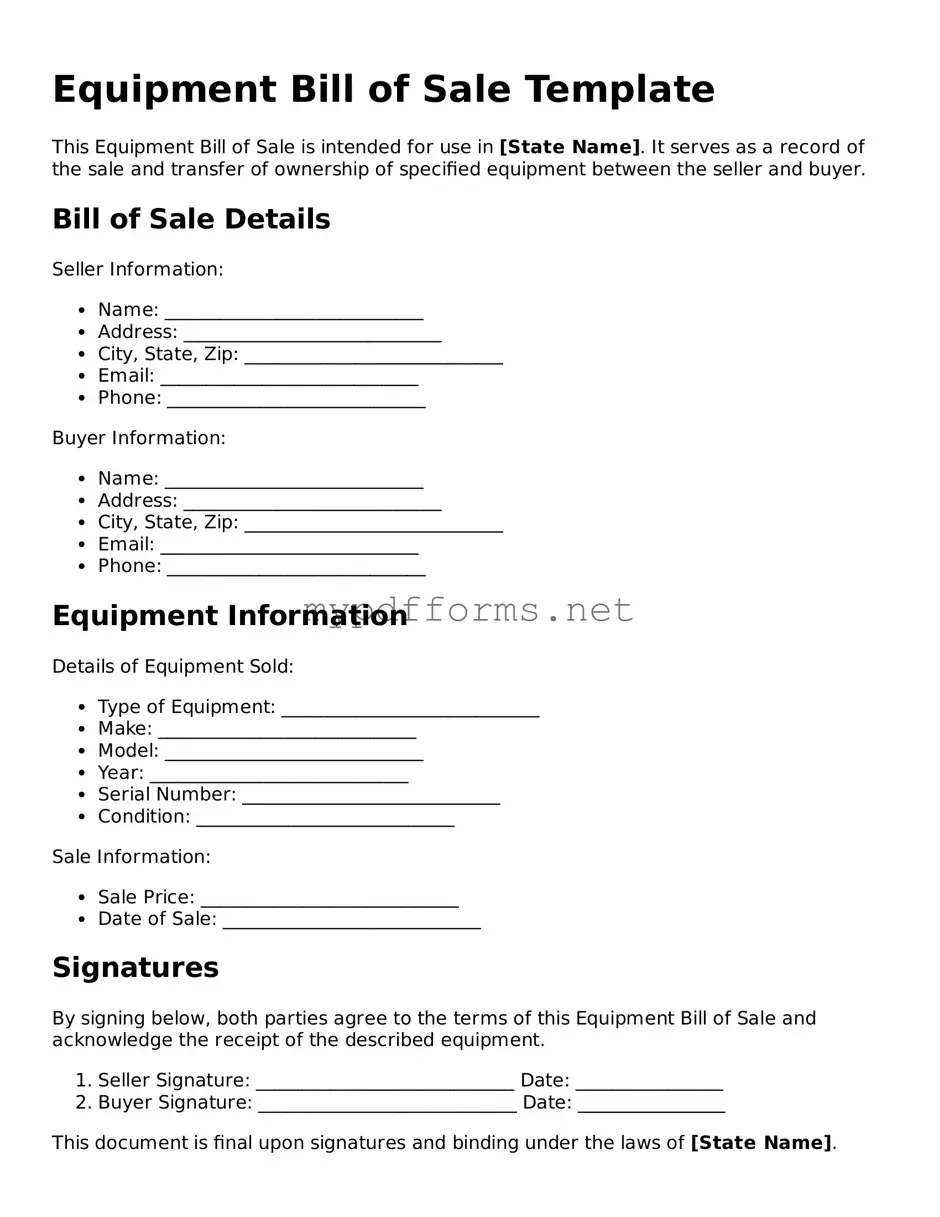The Equipment Bill of Sale is closely related to the Vehicle Bill of Sale. Both documents serve as proof of transfer of ownership from one party to another. A Vehicle Bill of Sale typically includes details such as the vehicle's make, model, year, and identification number, as well as the buyer's and seller's information. Just like the Equipment Bill of Sale, it often requires signatures from both parties to validate the transaction. This document is crucial for registering the vehicle with the state and may also be needed for insurance purposes.
Another document similar to the Equipment Bill of Sale is the Personal Property Bill of Sale. This form is used for the sale of various personal items, such as furniture, electronics, or collectibles. Like the Equipment Bill of Sale, it outlines the details of the item being sold, including its condition and any warranties. Both documents aim to protect the interests of both the buyer and seller by providing a clear record of the transaction, ensuring that both parties understand what has been agreed upon.
The Real Estate Purchase Agreement shares similarities with the Equipment Bill of Sale, although it pertains to real property rather than personal property. This agreement details the terms of the sale, including the purchase price, closing date, and any contingencies. Both documents serve as formal contracts that outline the responsibilities and rights of each party involved. They require signatures to be legally binding, thereby ensuring that the transaction is recognized under the law.
The Lease Agreement is another document that resembles the Equipment Bill of Sale in that it governs the use of property, albeit temporarily. This agreement outlines the terms under which one party can use another party's equipment or property, specifying the duration, rental fees, and responsibilities for maintenance. While the Equipment Bill of Sale indicates a permanent transfer of ownership, the Lease Agreement establishes a temporary arrangement, but both documents require clear terms to protect the interests of all parties involved.
A Promissory Note can also be compared to the Equipment Bill of Sale, particularly when financing is involved in the purchase of equipment. This document represents a promise by the buyer to repay the seller or a lender a specified amount of money under agreed-upon terms. Both documents serve to formalize a financial transaction, although the Promissory Note focuses on the repayment aspect, while the Equipment Bill of Sale centers on the transfer of ownership.
The Warranty Deed, while primarily used in real estate transactions, shares the essence of transferring ownership, similar to the Equipment Bill of Sale. This document provides assurance that the seller holds clear title to the property and has the right to transfer it to the buyer. Both documents require a clear description of the item or property being sold, and they protect the buyer by ensuring that they receive what they are entitled to without encumbrances.
For those who are interested in transferring ownership of a motorcycle, the Illinois Motorcycle Bill of Sale is an essential document. It acts as a legal record of the sale and is crucial for ensuring a smooth transaction between the buyer and seller. To understand more about this process, you can visit motorcyclebillofsale.com/free-illinois-motorcycle-bill-of-sale/ for further details on the necessary components and requirements.
Lastly, the Assignment of Contract is akin to the Equipment Bill of Sale in that it involves the transfer of rights and obligations from one party to another. This document is often used in business transactions where a party wishes to transfer their interests in a contract to a third party. Like the Equipment Bill of Sale, it requires clear identification of the parties involved and the specific terms being assigned. Both documents aim to ensure that all parties are aware of their rights and responsibilities following the transfer.
